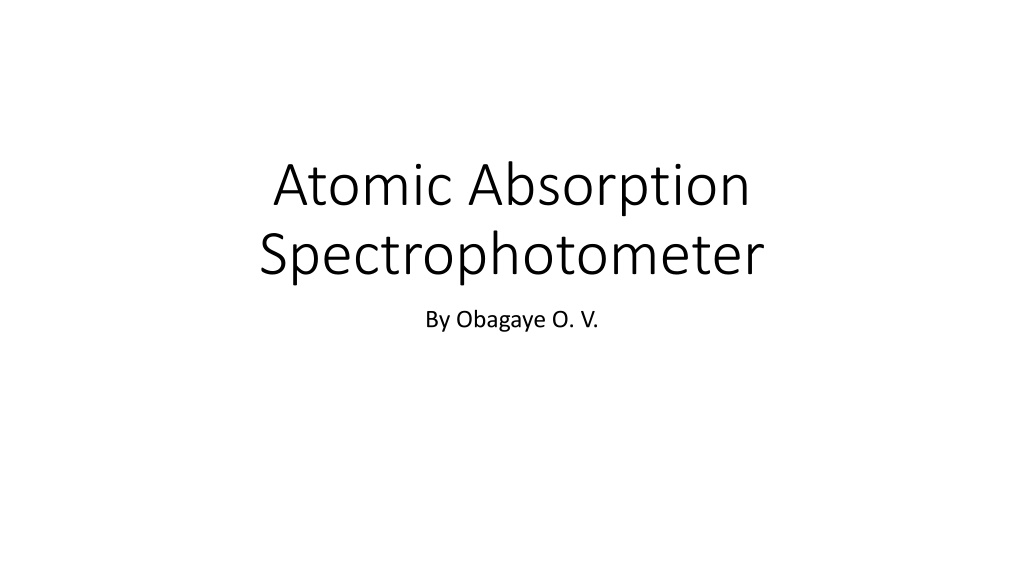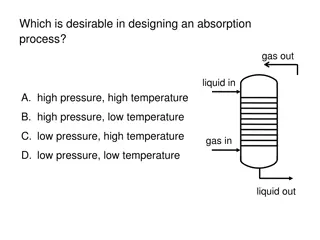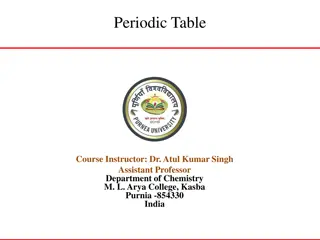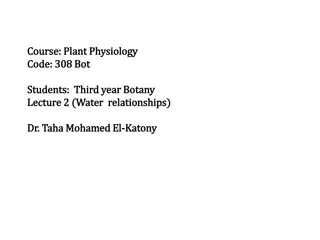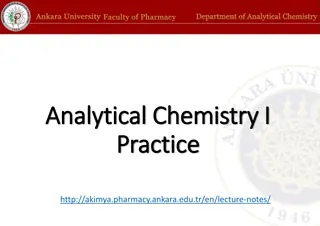Understanding Atomic Absorption Spectrophotometry in Analytical Chemistry
Atomic absorption spectrophotometry (AAS) is a spectro-analytical technique used for quantitative determination of chemical elements through the absorption of light by free atoms. This method is vital in various fields like biophysics, toxicology, and archaeology, allowing the analysis of over 70 different elements in solutions or solid samples. By utilizing the Beer-Lambert Law, AAS helps in assessing analyte concentrations in samples by analyzing the atomic absorption spectrum. This technique involves atomizing the sample, irradiating the atoms with optical radiation, and measuring the separated element-specific radiation with detectors. Overall, AAS plays a crucial role in clinical metal analysis and understanding the atomic constituents of different materials.
- Atomic Absorption Spectrophotometry
- Analytical Chemistry
- AAS
- Spectro-analytical Technique
- Beer-Lambert Law
Download Presentation

Please find below an Image/Link to download the presentation.
The content on the website is provided AS IS for your information and personal use only. It may not be sold, licensed, or shared on other websites without obtaining consent from the author. Download presentation by click this link. If you encounter any issues during the download, it is possible that the publisher has removed the file from their server.
E N D
Presentation Transcript
Atomic Absorption Spectrophotometer By Obagaye O. V.
Atomic absorption spectroscopy (AAS) is a spectro-analytical procedure for the quantitative determination of chemical elements using the absorption of optical radiation (light) by free atoms in the gaseous state. Atomic absorption spectroscopy is based on absorption of light by free metallic ions.
In analytical chemistry the technique is used for determining the concentration of a particular element (the analyte) in a sample to be analyzed. AAS can be used to determine over 70 different elements in solution, or directly in solid samples via electrothermal vaporization. It is commonly used in biophysics, toxicology, pharmacology and archaeology research.
Atomic absorption spectrometry has many uses in different areas of chemistry such as clinical analysis of metals in biological fluids and tissues such as whole blood, plasma, urine, saliva, brain tissue, liver, hair, muscle tissue e.t.c.
Principle of operation The technique makes use of the atomic absorption spectrum of a sample in order to assess the concentration of specific analytes within it. It requires standards with known analyte content to establish the relation between the measured absorbance and the analyte concentration and relies therefore on the Beer-Lambert Law.
In order to analyse a sample for its atomic constituents, it has to be atomized. The atomizers most commonly used nowadays are flames and electrothermal (graphite tube) atomizers. The atoms should then be irradiated by optical radiation, and the radiation source could be an element-specific line radiation source or a continuum radiation source. The radiation then passes through a monochromator in order to separate the element-specific radiation from any other radiation emitted by the radiation source, which is finally measured by a detector.
Beer-Lambert Law The Beer Lambert law, relates the absorption of light to the properties of the material through which the light is travelling. A common and practical expression of the Beer-Lambert law relates the optical absorption of a physical material containing a single attenuating species of uniform concentration to the optical path length through the sample and absorptivity of the species. This expression is: A = c
Where; is the molar attenuation coefficient or absorptivity of the attenuating species. is the optical path length. c is the concentration of the attenuating species.
